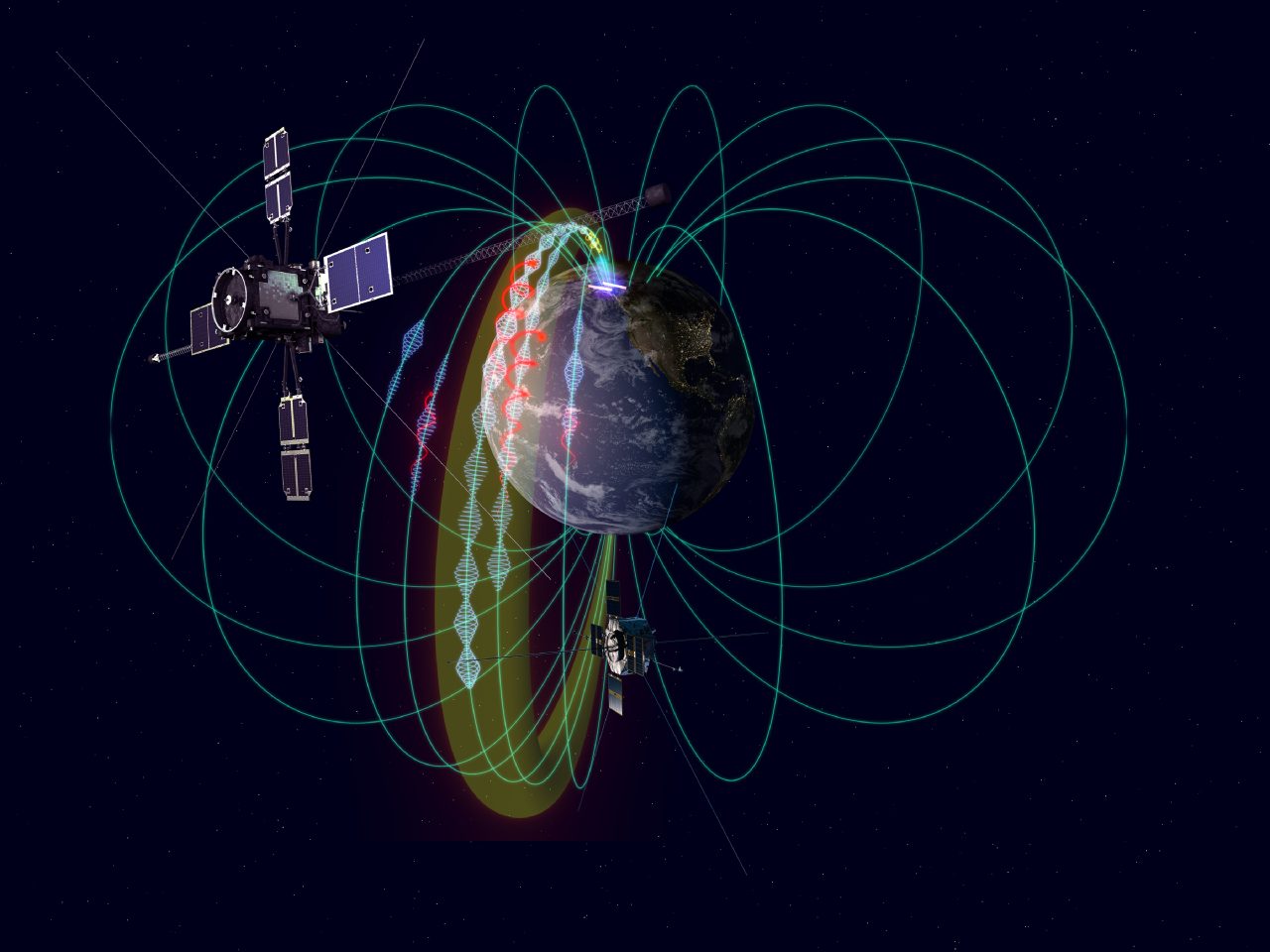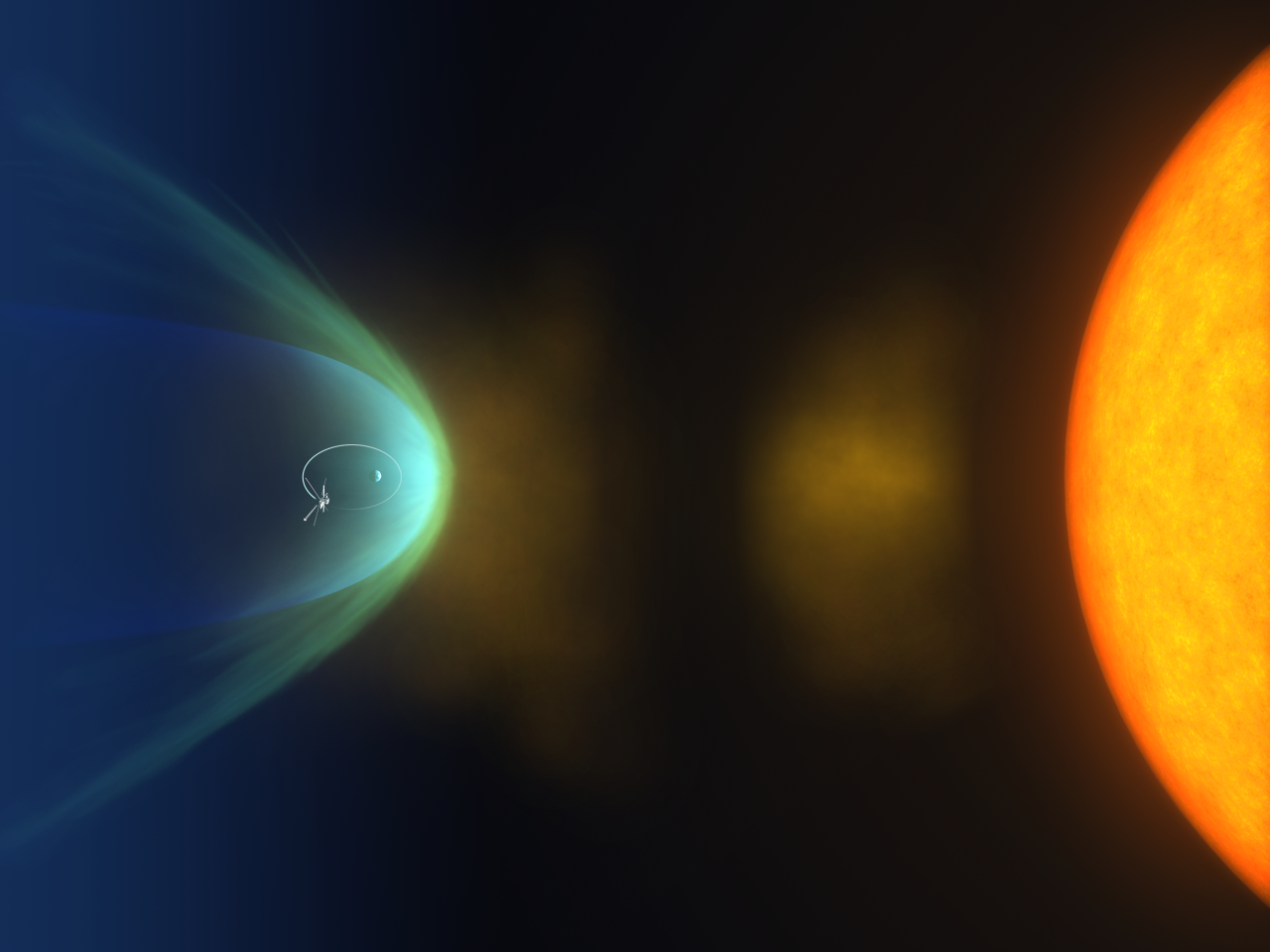Solar-Terrestrial Science Division
In the Solar-Terrestrial Science Division, we conduct research aimed at understanding and elucidating the electromagnetic plasma environment in the regions such as geospace, solar wind, and planetary space. Specifically, our research focuses on:
(1)Developing advanced observational instruments to measure and analyze plasma waves scientifically.
(2)Innovating cutting-edge methods for analyzing electromagnetic plasma wave data observed in space using the up-to-date signal processing technologies.
Using these tools,
(3)We are promoting research that aims to achieve a wide range of scientific outputs, from the microscopic wave-particle interactions to the global electromagnetic plasma environment.
For nearly 30 years, members of our division have contributed to the development and data analysis of plasma wave instruments onboard various scientific satellites, such as “Akebono,” “Geotail,” “Nozomi,” and “Kaguya.” Building on this expertise, we are currently involved in the operation and data analysis of plasma wave experiment (PWE) onboard the geospace satellite “Arase” in the Earth’s inner magnetosphere as well as plasma wave instruments (PWI) onboard the Mercury magnetospheric orbiter “Mio,” one of the a key parts of the BepiColombo mission—a joint project between Japan and Europe. Our group has developed the magnetic field sensors, onboard software and ground data processing systems for these instruments.
We are also contributing to the development of ground-based observation networks. For example, we are participating in the PWING project, led by the Institute for Space-Earth Environmental Research (ISEE) at Nagoya University, which was established as a network of multiple ground-based observation points. We mainly contributed to the installation of an observation network of VLF/ELF electromagnetic wave measurements in the auroral regions of the Northern Hemisphere and analyses of the measured data.
Our instrument development, data analysis, and research activities are being carried out in close collaboration with numerous domestic research groups, including those from JAXA’s Institute of Space and Astronautical Science (ISAS), Tohoku University, Kyoto University, and Nagoya University, as well as many international research groups, such as the Czech Academy of Sciences, the University of Iowa, the University of Minnesota, the French National Centre for Scientific Research (CNRS), and the Paris Observatory. These collaborations have led to numerous scientific achievements.

(Credit: ERG Science Team)
Research on Pc1 Wave Amplitude Modulation Regions
Pc1 waves, one of geomagnetic pulsation observed on the ground, are known to exhibit characteristic amplitude modulation, known as pearl structures, with periods of around 2 to 3 minutes. Both magnetospheric and ionospheric origins have been proposed for this amplitude modulation. In this study, we analyzed the Pc1 waves and proton aurora observed at magnetically conjugate points in the Northern and Southern polar stations on the ground, and investigated the region where Pc1 waves are amplitude modulated. We found that the amplitude modulation of Pc1 waves is secondary induced by the modulation of ionospheric currents associated with auroral phenomena, suggesting that the amplitude modulation of Pc1 waves is ionospheric origin. To further verify this mechanism, we initiated a new aurora camera observation in collaboration with the British Antarctic Survey in 2020.
Research on Wave-Particle Interaction Regions in the Magnetosphere
Using the spatial changes of flash auroras in the ionosphere caused by isolated chorus waves, we clarified the asymmetry of the wave-particle interaction region in the perpendicular direction to the magnetic field lines in the magnetosphere. Furthermore, we revealed through numerical calculations that this asymmetry is caused by the propagation characteristics of isolated chorus waves. We are now advancing research to estimate the various properties of isolated chorus waves in the wave-particle interaction region using this numerical model and the temporal changes of flash auroras in the ionosphere.
Three-Dimensional Observation of Plasma Waves Using Multi-Point Observations
By combining four observational platforms—Japanese scientific satellite “Arase,” the U.S. scientific satellite “Van Allen Probes,” Japanese ground observation network “PWING Network,” and Canadian ground observation network “CARISMA Magnetometer Network”—we successfully conducted simultaneous multi-point observations of electromagnetic ion cyclotron waves which are generated in the Earth’s magnetosphere and latitudinally propagating down to the ground. Traditional single-point observations have made it difficult to understand where plasma wave phenomena are generated and how they propagate in space. This study identified the propagation paths of electromagnetic ion cyclotron waves from space to the ground. We also revealed plasma heating caused by these waves along the propagation paths. We believe that these results will contribute to understanding the three-dimensional distribution of plasma wave phenomena and the mechanisms of environmental changes simultaneously occurring in various regions in space.

(Credit: ERG Science Team)
Establishment of Precise Calibration Methods for Plasma Wave Observation Data
To precisely measure plasma wave phenomena observed in the Earth’s magnetosphere, we developed plasma wave experiments (PWE), which are now onboard the geospace exploration satellite “Arase.” The PWE feature intelligent signal processing implemented in the onboard software, allowing for the acquisition of higher resolution and various kinds of scientific data compared to the one measured by the previous scientific satellites. From 2019 to 2021, as part of the intelligent signal processing, we conducted the data analysis obtained from the “antenna impedance measurement function of the electric sensors” implemented in the PWE and quantitatively evaluated the electric field antenna impedance, which depends on changes in the surrounding plasma environment. This allowed us to correctly calibrate the amplitude and phase measured by the electric field sensors, significantly improving observation accuracy. This achievement is an important step toward realizing precise electric field measurements with new types of electric field antennas and full 3D observations of six electromagnetic field components in future missions. We are currently exploring the functionality to independently measure the antenna impedance of each axis for even higher precision calibration.

Swing-By Observations with the Mercury Magnetospheric Exploration Satellite “Mio”
The Mercury magnetospheric exploration satellite “Mio” is currently navigating interplanetary space in preparation for entering Mercury’s orbit around the end of 2026. During the gravity assist swing-bys conducted at Earth, Venus, and Mercury from 2019 to 2021, we conducted scientific observations using plasma wave instruments (PWI). We successfully obtained the necessary information for ensuring the health of the instruments and calibrating the observation data. Additionally, we detected signals likely to be natural plasma waves during the swing-bys, and we are currently conducting a detailed analysis of these signals.
Research on ASIC Development for Sensors and Receivers for Future Missions
In preparation for future small and ultra-small satellites, we are conducting research on ASIC (application-specific integrated circuit) development to achieve radiation resistance and miniaturization while maintaining electrical characteristics. Notably, we have developed a new ASIC preamplifier integrated with search coil magnetometer that utilizes the sensor part as radiation shielding. We also improved the front-end ASIC for waveform receivers, enhancing the dynamic range and incorporating temperature compensation circuits to improve operating temperature resistance. To further reduce noise, we are developing a chopper-type ASIC preamplifier.
Research on FPGA Implementation for Onboard Digital Processing inside of Receivers for Future Missions
In conventional instruments like those onboard “Arase” and “Mio,” the onboard CPU collects and processes observed electromagnetic wave data and generates telemetry data for ground transmission. However, the telemetry capacity for ground transmission is extremely limited compared to the amount of observation data obtained. Therefore, it is necessary to perform onboard spectral analysis, key parameter extraction for estimating propagation direction of the waves, and compression and selection of telemetry data. However, due to the computational limitations of the onboard CPU, real-time processing is not possible, and only a small portion of intermittently obtained data can be processed. To address this, we aim to simultaneously achieve (a) significant miniaturization and weight reduction of receivers and (b) continuous real-time processing of observation data by packaging the main digital signal processing of receivers, which previously occupied A4-sized circuit boards, into an FPGA (field-programmable gate array).




